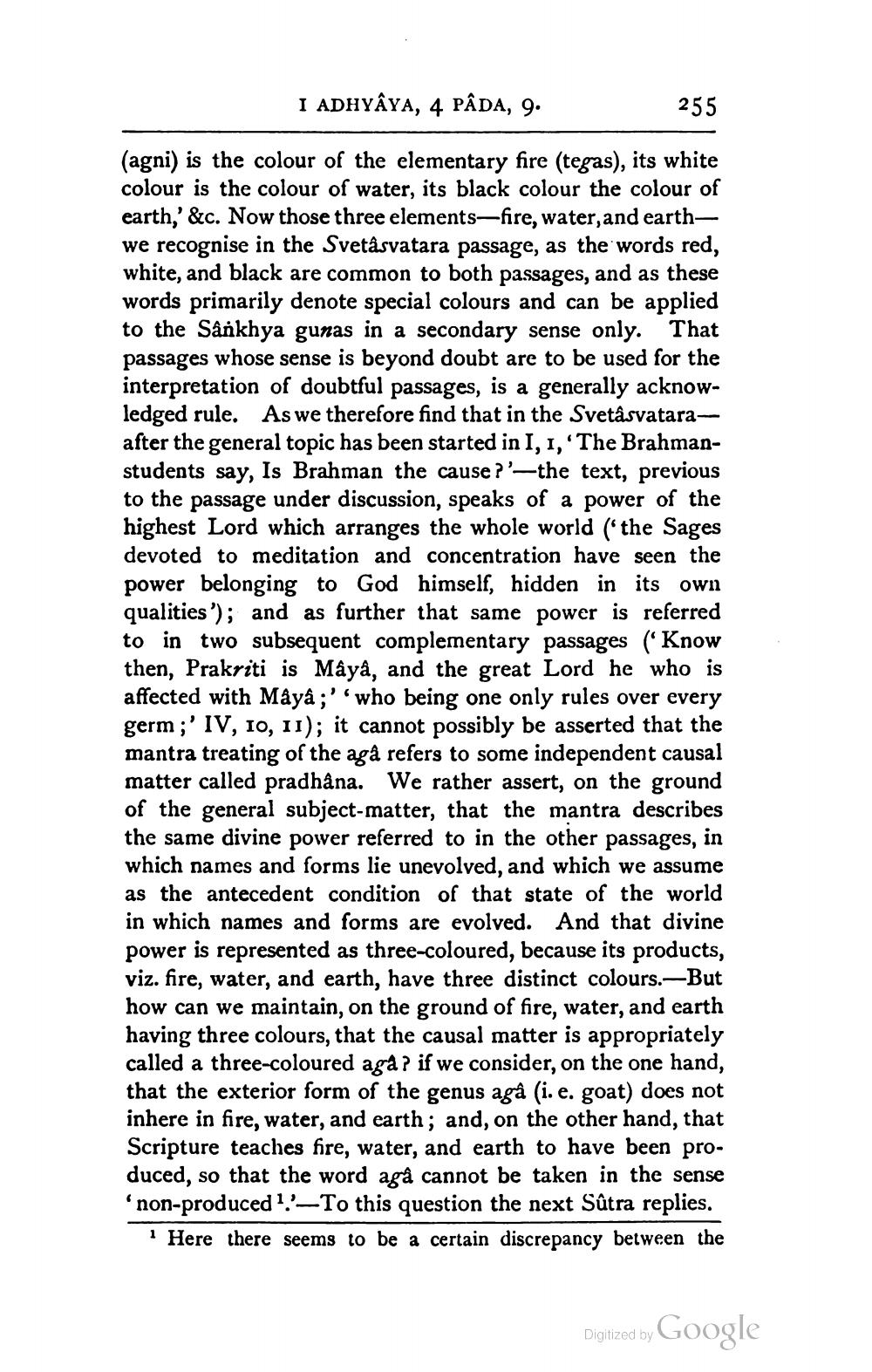________________
I ADHYAYA, 4 PÂDA, 9.
255
(agni) is the colour of the elementary fire (tegas), its white colour is the colour of water, its black colour the colour of earth,' &c. Now those three elements-fire, water, and earthwe recognise in the Svetâsvatara passage, as the words red, white, and black are common to both passages, and as these words primarily denote special colours and can be applied to the Sânkhya gunas in a secondary sense only. That passages whose sense is beyond doubt are to be used for the interpretation of doubtful passages, is a generally acknowledged rule. As we therefore find that in the Svetåsvataraafter the general topic has been started in I, 1, 'The Brahmanstudents say, Is Brahman the cause ?'-the text, previous to the passage under discussion, speaks of a power of the highest Lord which arranges the whole world (the Sages devoted to meditation and concentration have seen the power belonging to God himself, hidden in its own qualities'); and as further that same power is referred to in two subsequent complementary passages (Know then, Prakriti is Maya, and the great Lord he who is affected with Mâyâ;' who being one only rules over every germ;' IV, 10, 11); it cannot possibly be asserted that the mantra treating of the agà refers to some independent causal matter called pradhana. We rather assert, on the ground of the general subject matter, that the mantra describes the same divine power referred to in the other passages, in which names and forms lie unevolved, and which we assume as the antecedent condition of that state of the world in which names and forms are evolved. And that divine power is represented as three-coloured, because its products, viz. fire, water, and earth, have three distinct colours.-But how can we maintain, on the ground of fire, water, and earth having three colours, that the causal matter is appropriately called a three-coloured aga ? if we consider, on the one hand, that the exterior form of the genus agå (i.e. goat) does not inhere in fire, water, and earth; and, on the other hand, that Scripture teaches fire, water, and earth to have been produced, so that the word agå cannot be taken in the sense non-produced 1. - To this question the next Sûtra replies. * Here there seems to be a certain discrepancy between the
Digitized by Google




